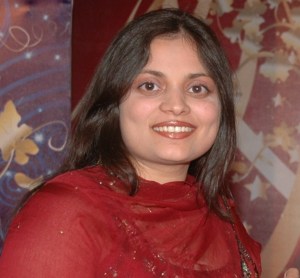 Management education has become more complex and challenging in the Post- millennium. The Global meltdown witnessed by USA and Europe in particular and South Asia in general has given a wakeup call to all the students and peers of Management to think differently. Creativity fills up that crucial gap between the theory and practice as innovation alone can bring about a paradigm shift from the existing tools and techniques of Management.
Management education has become more complex and challenging in the Post- millennium. The Global meltdown witnessed by USA and Europe in particular and South Asia in general has given a wakeup call to all the students and peers of Management to think differently. Creativity fills up that crucial gap between the theory and practice as innovation alone can bring about a paradigm shift from the existing tools and techniques of Management.Creativity refers to visualization by a person to create something new, to generate new ideas, to invent and discover unchartered paths and to show a road map to achieve better results. It is an effort to a ‘Kaizen’ - Change for better. It comes as a beacon light to dispel the problem. Michael Mumford defines creativity as one which involves the` production of novel and useful product’. Baden holds that creativity is producing something new, a domain changing in contribution. Creativity is a transformative learning which is meaningful interpretation of action and insights. It is an inspiration that comes out with cognitive impulse having its roots in the knowledge, experience, plain and reverse thinking.
Being creative means dealing with ideas. The World runs on new ideas. All the great inventions and discoveries are the result of creativity and innovations. Acquiring detailed background knowledge on the subject is a key to being creative – because almost all new ideas are simply a recombination of existing ideas. A creative person always knows a lot about his subject. The flash of inspiration comes from a background of expert knowledge. ‘Chance’, Louis Pasteur said – ‘favours the prepared mind’. We used to see a person or an object and conceive its image in our mind. It was not very convenient to explain to others. But the invention of Photo-Camera settled the matter.
Everything we deal with in our life existed first as an idea. Henry Ford had imagined of a 4 wheeler much before the T-Model rolled out from the inventor’s workshop. It is said that ‘ideas can come to anyone who is willing to seek them out’. Many of the extra-ordinary inventions we use in our world today come out not from genius working in laboratories but from quite ordinary people.
How can One be Creative?
Albert Benet said, “I find that images appear only if we give our ideas uncontrolled freedom.” A few of these steps may help to churn out some creative ideas:
- Prepare your mind
- Find a place
- Relax
- Sensitise yourself/ hold yourself
- Ask questions
- Wait patiently, till you get some idea
- Prepare your mind
- Find a place
- Relax
- Sensitise yourself/ hold yourself
- Ask questions
- Wait patiently, till you get some idea
An individual or an organization can become more creative if the following 6 steps are followed:
- Initiation
- Internalization
- Intensification
- Imagination
- Innovation
- Implementation
- Initiation
- Internalization
- Intensification
- Imagination
- Innovation
- Implementation
The above 6 steps were very brilliantly explained by Dr. Daniel Theyagu, Corporate Trainer from Management Development Institute, Singapore while participating in an interactive session in Accurate’s Campus on 29th December, 2010. The students should always try to think out of the box. They should always look upward – something to achieve extra-ordinary. Accurate provides an incubation centre to foster such imaginative and innovative ideas to help the butterflies come of their cacoon.
About Author
Ms. Poonam Sharma is Group Director of Accurate Group of Institutions, Greater Noida. She is well known in education sector. She is the recipient of prestigious 18th Devang Mehta Edupreneur of the Year Award- 2010. Earlier she was conferred “Best Woman Entrepreneurship Award” in All India Achievers Conference for her contribution in the technical and management education. Most recently she has been recognized among top 5 at the most prestigious Women Leaders in India Awards 2010 in two categories of “Best Young Woman Entrepreneur” and “Leader in Education”.
No comments:
Post a Comment